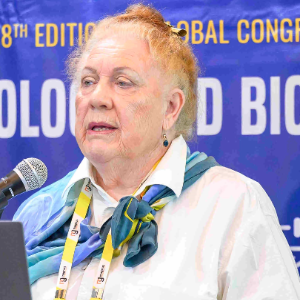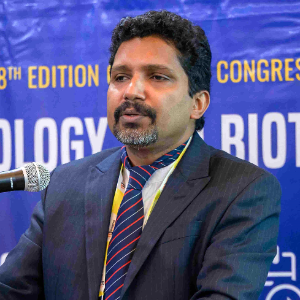Plant Disease cycles
The plant disease cycle represents the sequence of events by which a pathogen infects and spreads through a plant population. This cycle begins when a pathogen encounters a susceptible host, followed by stages like entry, establishment, symptom development, reproduction, and dissemination. Pathogens such as fungi, bacteria, viruses, and nematodes each have distinct cycles that may be influenced by environmental conditions like moisture, temperature, and soil health. Recognizing each stage of the disease cycle allows farmers and researchers to devise strategic interventions, like timely pesticide applications, resistant plant varieties, or crop rotation. By targeting critical points in the cycle, such as initial infection or spore dispersal, it’s possible to reduce disease spread, enhance crop resilience, and ultimately improve agricultural productivity.

Mohammad Babadoost
University of Illinois, United States
Mary Cole
The University of Melbourne, Australia
Edgar Omar Rueda Puente
Universidad de Sonora, Mexico
P E Rajasekharan
ICAR-IIHR, India
Rameshkumar K B
Jawaharlal Nehru Tropical Botanic Garden and Research Institute, India
Selina Sterup Moore
Aarhus University, Denmark


Title : Exploring the genetic diversity in tannin-rich forages to explain the large intra species variability in tannin content
Selina Sterup Moore, Aarhus University, Denmark
Title : Isolation and functional properties of biomolecules of plants and its application
Balagopalan Unni, GEMS Arts & Science College (Autonomous), India
Title : Primed for the future: PGPR and the promise of sustainable, heritable crop resilience
Prashant Singh, Banaras Hindu University (BHU), India
Title : Revealing allelic variations in candidate genes associated with grain yield under salinity stress between two contrasting rice genotypes
Nisha Sulari Kottearachchi, Wayamba University of Sri Lanka, Sri Lanka
Title : Adaptive strategies of Aristida L. species across ecological zones of Pakistan: Linking soil characteristics with morphological and physiological traits
Iram Ijaz, University of Agriculture Faisalabad Pakistan, Pakistan
Title : Ethnobotanical survey and abundance of weeds in selected Manihot esculenta (cassava) Crantz farms in Osun state, Nigeria
Dada Caleb Mayokun, University of Ibadan, Nigeria